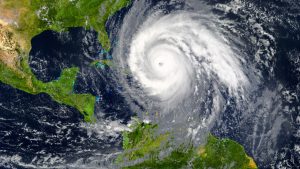
In 2006, the first public model to project hurricane losses for the State of Florida was unveiled on the Florida International University campus, the site of much of the model’s development. Successfully certified by the Florida Commission on Hurricane Loss Projection Methodology in 2007, the state has used it 230 times. It recently won its second re-certification after a rigorous period of testing, and intense cross examination in Tallahassee. During the session, a technical team from the commission posed questions for about three and a half days, followed by half a day of questioning from the entire commission.
“This certification is the gold standard for such models,” said Shahid Hamid, the principal investigator, finance professor and director of Florida International University’s (FIU) International Hurricane Research Center’s (IHRC) Laboratory for Financial, Insurance and Economic Research. “Numerous groups have tried for it, but only five have succeeded, and the other four certified models are national in scope, whereas ours is specifically for storms that cause damage in Florida.”
The major client of the model is the Florida Office of Insurance Regulations; however, insurance and reinsurance companies also use the model for a fee. They can use the output from the model to determine the windstorm rates they want to charge.
Model gets yearly update.
The computer model must conform to 35 major standards within the five areas of meteorology, computer science, engineering, actuarial science and insurance, and statistics.

“Every year, we have new data on hurricanes, on damages and insured losses, and we revise parts of the model for annual review while some aspects are automatically re-certified” Hamid said.
Approximately 15 professors and experts and 15 graduate students from FIU and other universities across the country participated in the creation of the model. Many of them contribute to the re-certification process, which, in addition to extensive testing, involves numerous model runs and generating various output prior to the Tallahassee presentation. FIU handles about 40 percent of the work.




